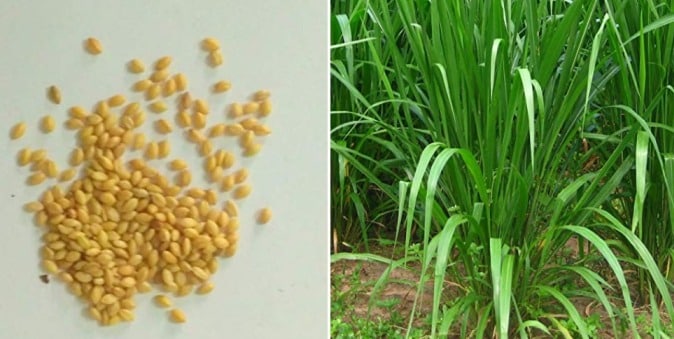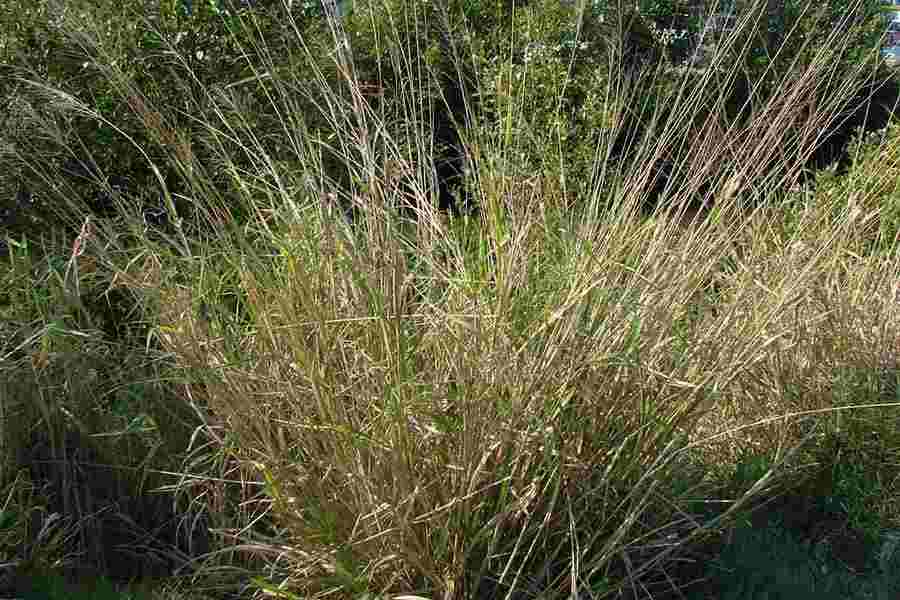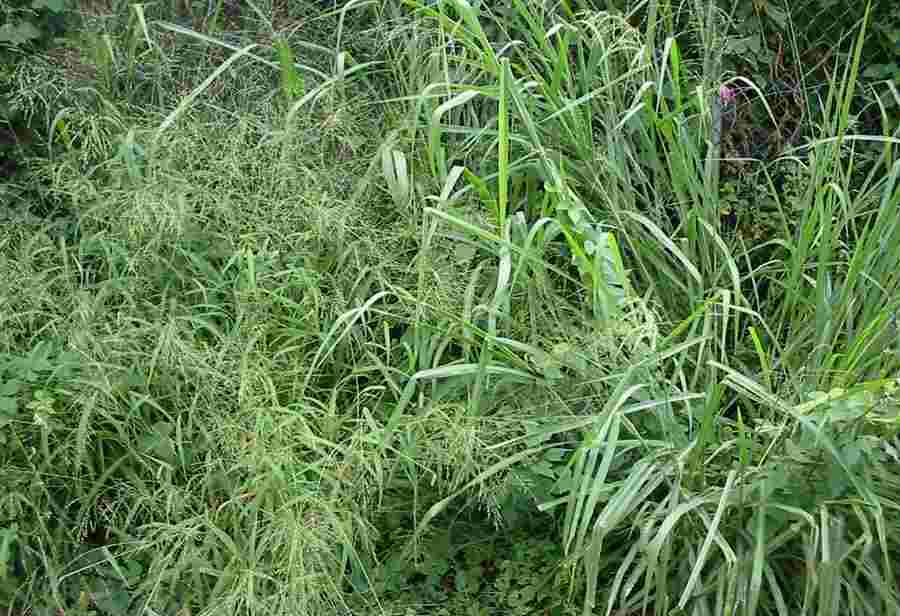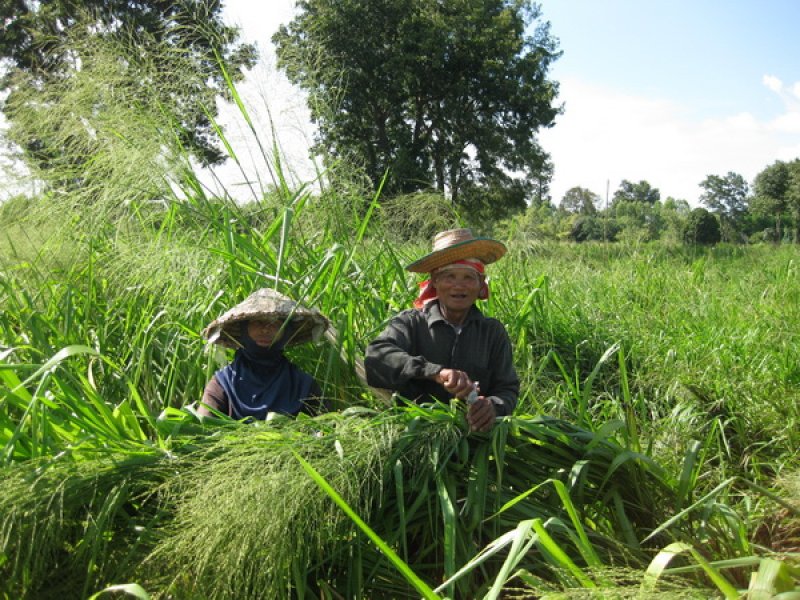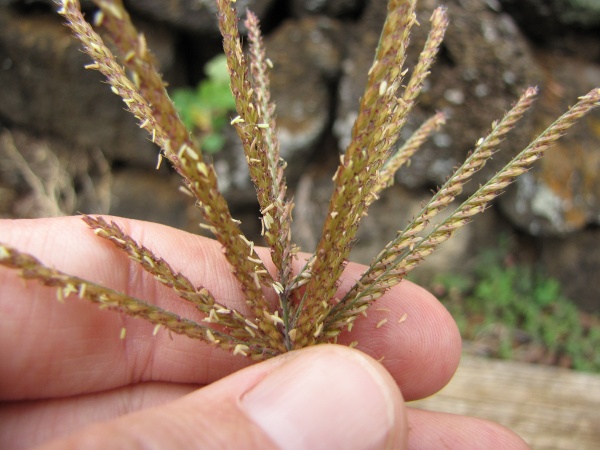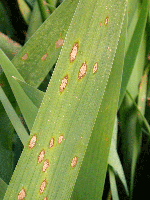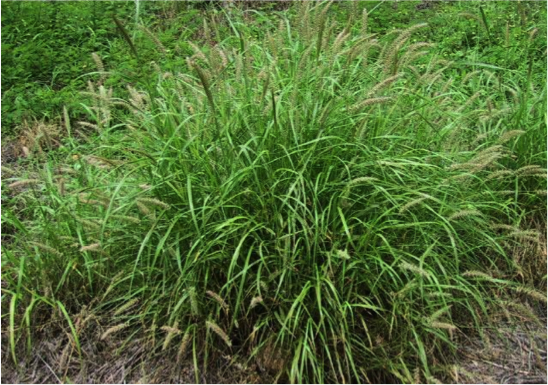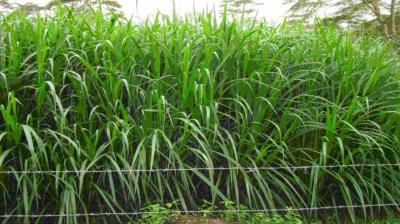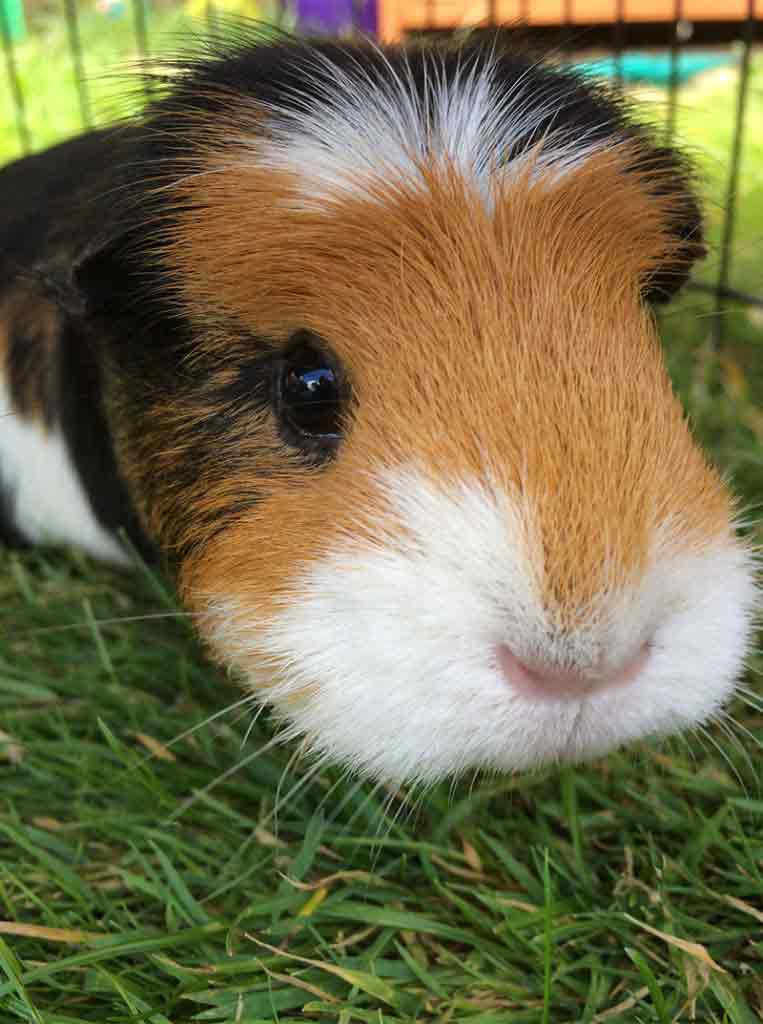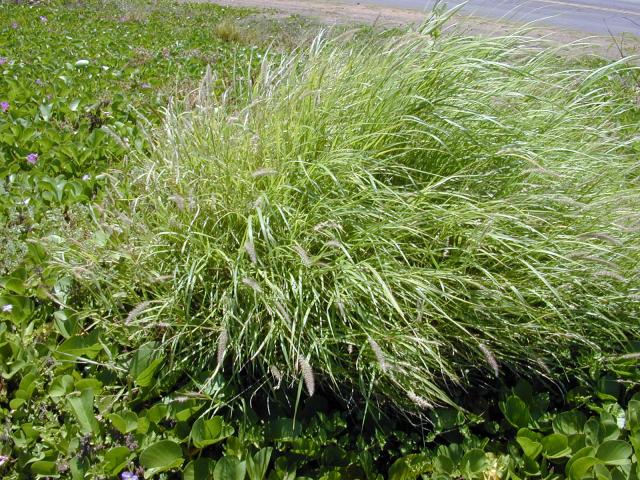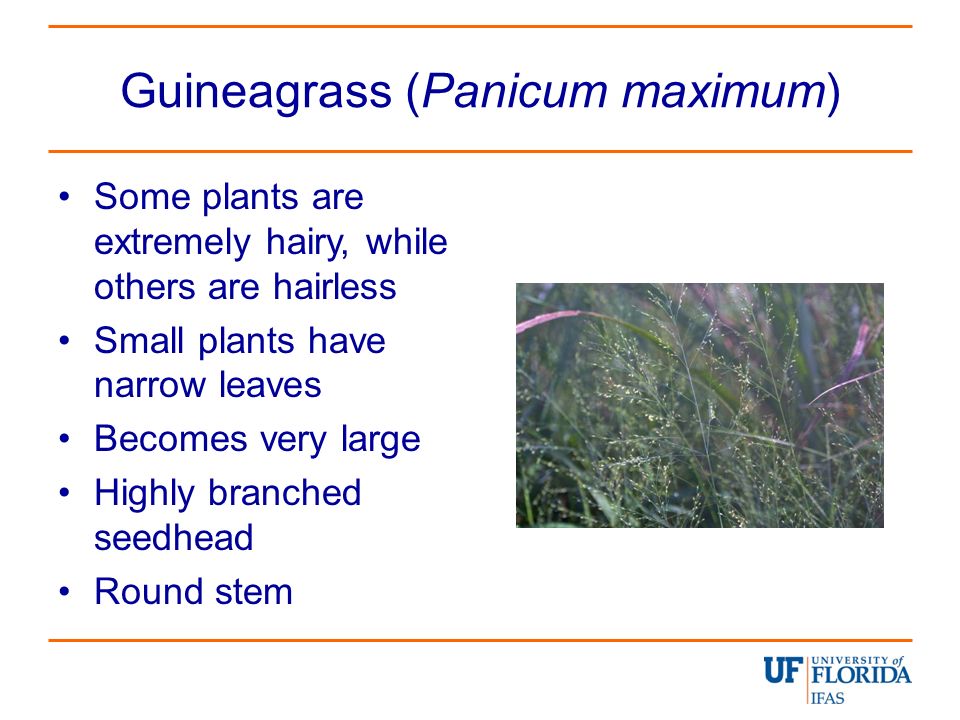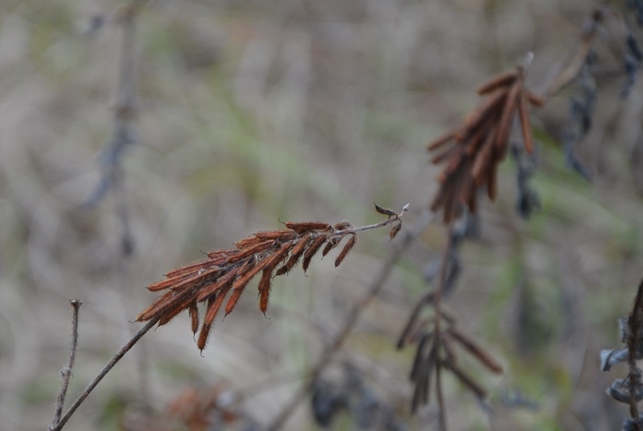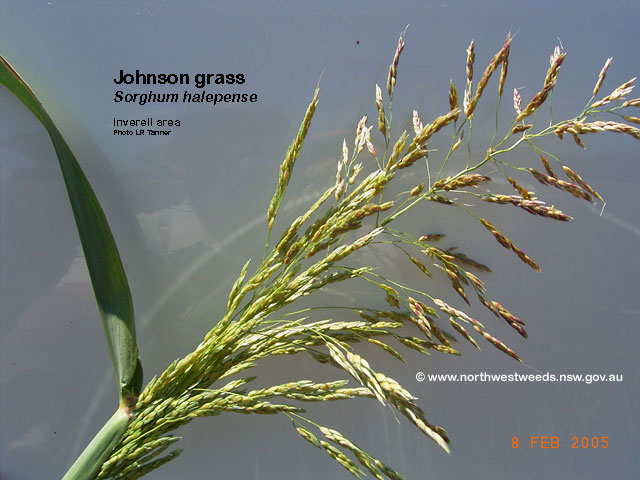Guinea Grass Seed Head

It is used as fodder for animals and is used to make hay.
Guinea grass seed head. The flower head is large open well branched and has an overall pyramid outline. Guinea grass is an example of a useful fodder species that causes problems when growing in the wrong place at the wrong time. Guinea grass megathyrsus maximus var. Notes on taxonomy and nomenclature top of page.
Seed heads are large up to 40 cm long and are well spread with a large number of fine branches. Guinea grass is a coloniser of disturbed sites. Maximum was the sole species in panicum subgenus megathyrsus now elevated to genus rank. It is a tall perennial grass with average height of 3 4 m.
Maximus is a large and robust plant 1 8 3 m tall with very large leaves and seed heads. Maximus is a large and robust plant 1 8 3 m tall with very large leaves and seed heads. Initially it is green or greenish violet. If the grass dominates associated legumes during this period grass bulk can be reduced by a short period of intensive grazing.
Megathyrsus maximus was formerly known as panicum maximum placed in a subgenus of panicum within the grass subfamily panicoideae this subfamily includes over 3000 species approximately 500 of them in the polymorphic and polyphyletic genus panicum p. The characteristics of setaria also known as south african pigeon grass and african bristle grass are as follows. Guinea grass megathyrsus maximus var. Leaves are broad flat grey green in colour and generally hairless.
Much branched open panicle generally 30 to 45 cm long. Fall panicum panicum dichotomiflorum. Its leaves are usually dark green in colour and its flower spikelets are hairless. Seeds are oblong in shape and.
Seed heads are 40 cm long oblong shape and are greenish purple in color. Guinea grass should not be grazed in the first year until plants are well established and preferably not until initial seed drop. Reproduces by seed and underground stems. Maximus and green panic megathyrsus maximus var.
Guinea grass is generally grown in the wet and seasonally dry tropics of australia preferably with rainfall over 1 500 mm but will extend into about 1000 mm rainfall areas in the subtropics. The key to eradicating guinea grass is removing the seeds before they are spread by being eaten birds or stuck to the fur of other animals. The leaf blades have fine tip and is long and have midrib which is 1 cm wide. Related or similar plants.
Continuous heavy grazing of young regrowth can kill plants. Pubiglumis can be distinguished from each other by the following differences. The botanical name of guinea grass is megathyrsus maximus. At maturity it becomes a dark reddish or purplish brown.
